The islands are easily reached from both Europe and east-coast North America. But the Azores’ allure lies in its incredible volcanic geography, its many outdoor activities, and a lack of mass tourism.
The islands are a real gem – and I’m excited to tell you all about it in this jam-packed Azores travel guide!
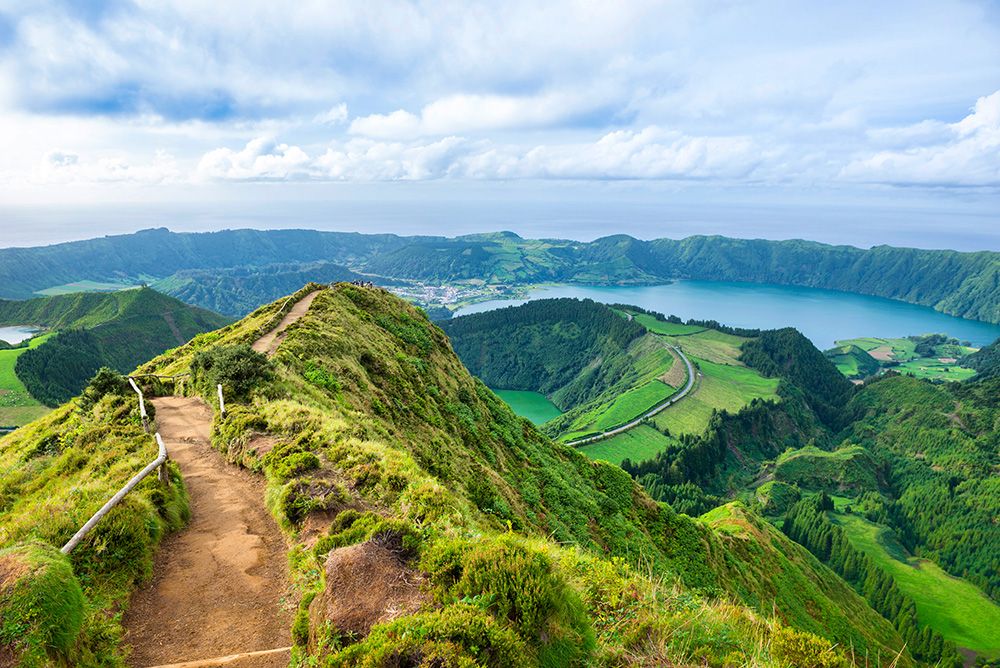
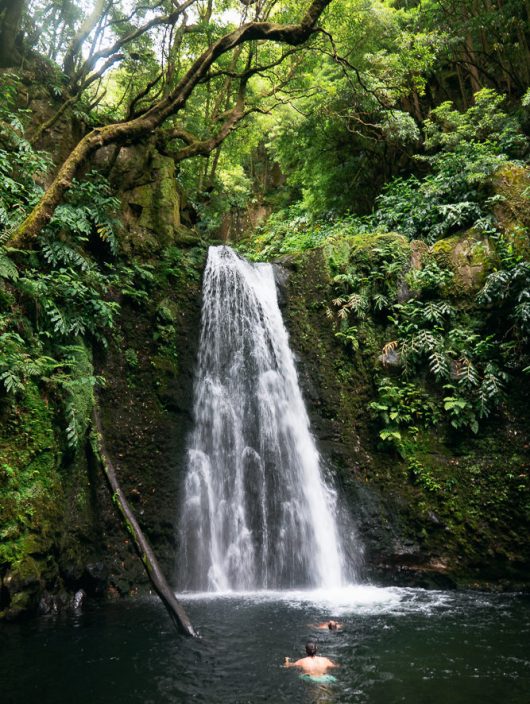
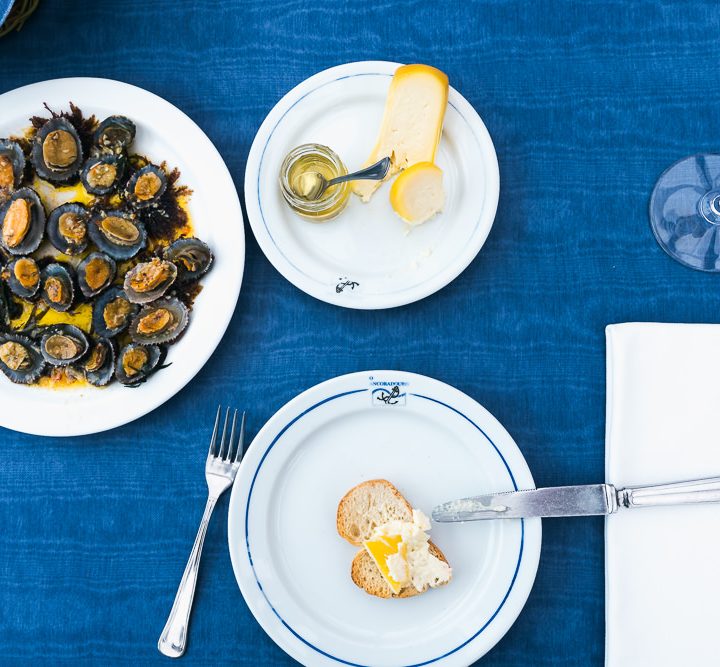
So get ready as I share with you all the essential Azores travel tips from the best islands to visit to getting from island to island.
I’ve been on the Azores on three trips of 9 days each, covering 5 of the 9 islands — and I’m sure I’ll be coming back for more.
Practical tips for your Azores itinerary
Before I get stuck into the best Azores islands to visit, there are a few things to consider. From how to get to the islands to when to visit, I’ll show you all you need to know for a stress-free Azores vacation.
Where are the Azores Islands?
Good question!
Even some devoted globe-trotters might struggle to pinpoint it precisely on a map, as the islands are but little dots in a vast ocean. Roughly speaking, the Azores are somewhere between the US and Europe.
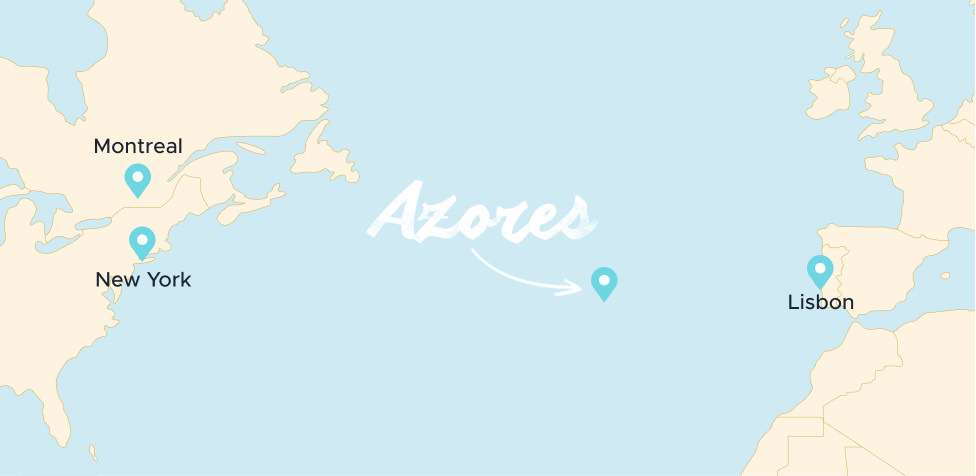
The Azores archipelago is about a 3-hour flight from Lisbon in mainland Portugal and roughly 5 to 6 hours from Boston or Toronto. Most flights arrive at João Paulo II Airport on São Miguel Island, and from there, island hopping the Azores is done by local plane or ferry.
While belonging to Portugal, the Azores have their own identity, as well as historical connections with (and a large diaspora in) the USA and Canada.
Good to know: the 9 Azores islands are not all close to each other. There are three island groups, each approximately a 1-hour flight apart. If you want to go island hopping, it’s easiest within the central island group (Terceira, São Jorge, Faial, and Pico), as these are all bunched together.
While in São Miguel, you should 100% do a whale-watching tour. And if you’re looking for an incredible, full-contact way of experiencing the islands’ lush nature, a canyoning excursion will be right up your alley.
I recommend self-driving on the Azores, but if you can’t, then a van tour is the next best thing.
Why visit the Azores archipelago?
Once you make it to this outermost point of Europe, you will be rewarded with some amazing opportunities for hiking, caving, scuba diving, canyoning, whale watching, and many more adventure activities.
The Azores is truly an adventure travel paradise! But equally, it’s a great place for a relaxing rural holiday.
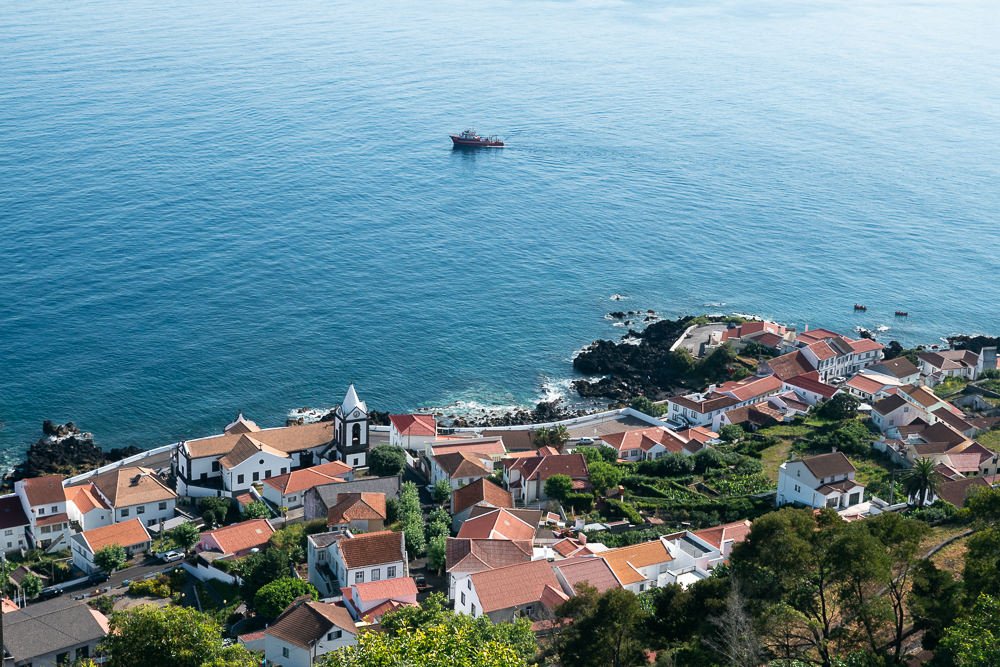
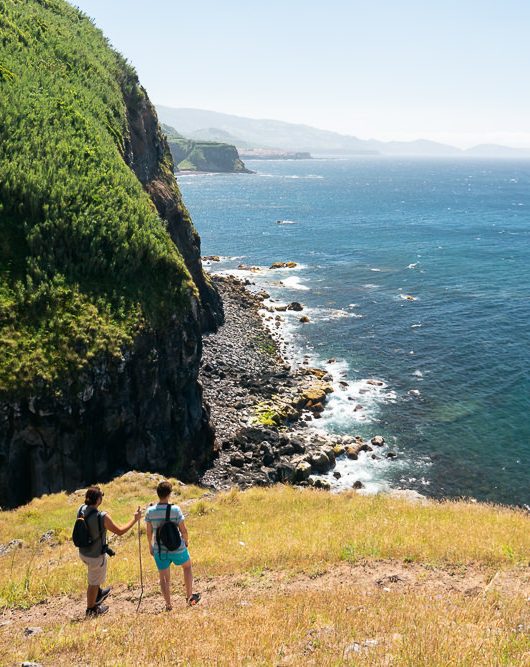
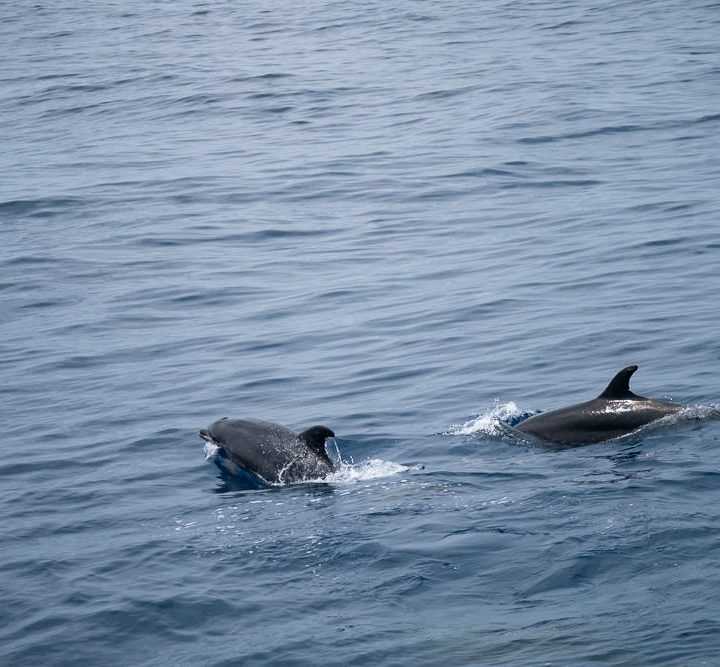
One thing I love is that it’s free from big exclusive resorts or large-scale tourism developments. The local authorities have capped the total number of hotel beds, committing themselves to sustainable tourism.
The Azores is not a party destination nor a typical sun-and-sand vacation place (due to the climate and relatively few beaches). Nevertheless, there are small but stunning beaches and natural pools to enjoy during your trip.
You can see volcanic craters, drive along meandering coastal roads, go dolphin and whale watching, gorge on fresh Azorean seafood, and go hiking all over the Azores.
If you’re looking for an original destination with incredible nature and a genuine atmosphere, then you may have just found the perfect place. Plus, backpacking the Azores as a digital nomad allows you to work while discovering a truly unique part of the world. Could you ask for much more?
Best time to visit the Azores, Portugal
The best time to visit the Azores is from June to September.
It’s not a tropical destination but is mild and sunny during summer.
As with everywhere in Europe, you may wish to avoid August, as this is consistently the busiest month of the year. The weather is fantastic during August, but the crowds and prices may be less than optimal. If you don’t need to travel in August, consider one of the other summer months. Otherwise, book early.
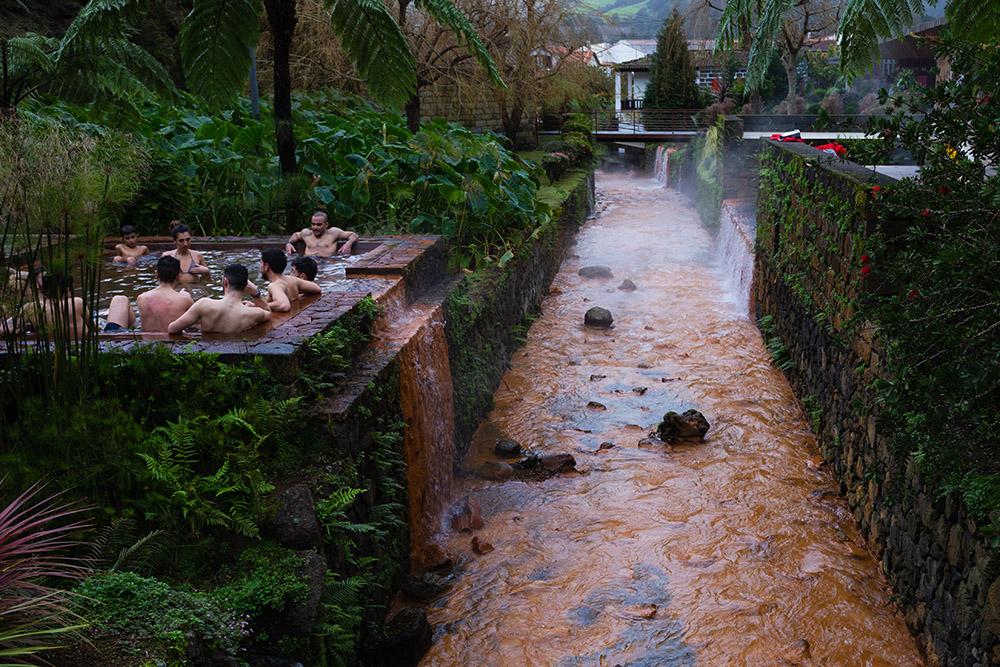
I’ve also spent some time in the Azores in winter. This was fine for some hiking or enjoying the hot springs on São Miguel, but the temperature and rainfall didn’t make it an ideal time to visit for many other activities. You can still have a good time, but it will be different.
Note: The Azores’ weather can be somewhat unpredictable, especially during the hurricane season from September to November. Although the islands aren’t hugely affected by hurricanes, they do experience bad weather during these months as the massive storms pass nearby.
How to get to the Azores
The Azores are remote, but they are pretty easy to fly to. The biggest airport is on the island of São Miguel, followed by the airport of Terceira.
From Europe: Budget carriers Ryanair and Easyjet began flying directly to São Miguel and Terceira a few years ago. You can fly direct from places such as London, Munich, Frankfurt, Lisbon, and Porto. You can also find seasonal direct flights from Amsterdam, Geneva, and Brussels.
From North America: There are direct flights from Boston, Toronto, and seasonally from Oakland and Montréal. They are mainly run by Azores Airlines.
Stopover on the Azores: If you’re traveling between North America and Europe, consider making a stopover on the Azores. Much like Iceland does, the Azores promotes itself as a layover between Europe and North America. Azores Airlines has promotions for Azores stopovers.
The Azores guide to island hopping by plane
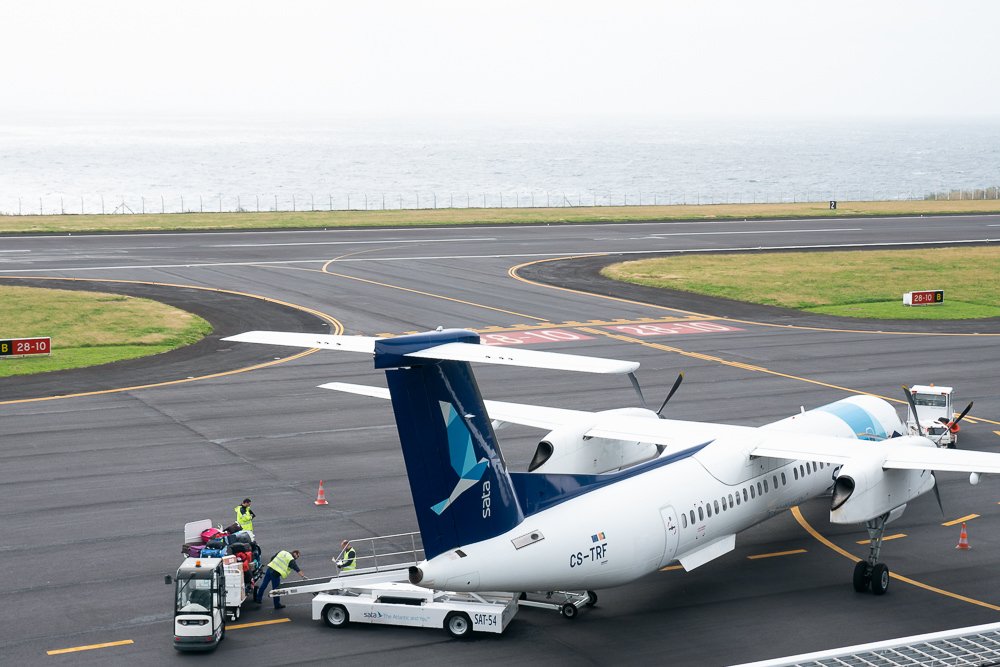
If you want to see multiple islands on your trip, the easiest way is to fly between the island groups. The local carrier SATA provides inter-island flight services. All islands have air connections.
It’s easy to travel between the islands by air, but it can be pricey. SATA is not a budget carrier, so if you’re making many hops, it will quickly add up. If you’re on a budget, then ferries are the better option.
The Azores Islands guide to island hopping by ferry
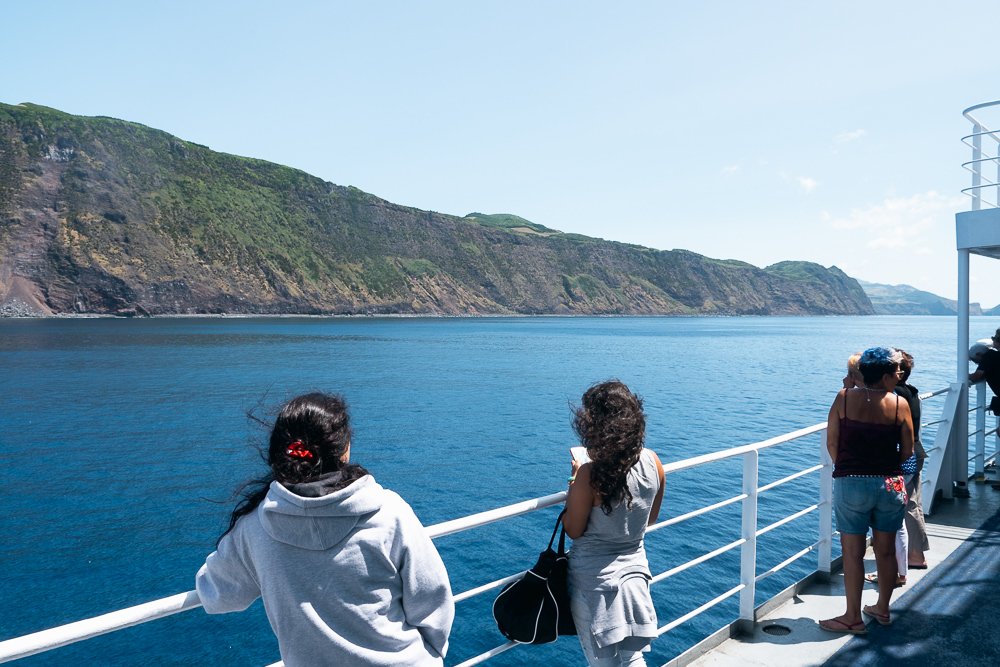
All ferries on the Azores are run by the same company, Atlânticoline. It’s easy to book ferry tickets online through FerriesDirect.com.
Ferries are the easiest way to hop between islands that are close together. In the central island group, islands like Pico and São Jorge are just short (30-60 min) ferry rides away. These ferries also operate year-round.
There are also ferries taking to the open seas between the three island groups, but they are limited. They run only from May to September and don’t run every day.
Some legs can take many hours, such as the São Miguel to Santa Maria ferry (4 hours). Some travelers choose to take the overnight ferry and sleep on board. Flights are easier for these longer distances.
Tip: If you’re under 30, consider getting an Azores InterYouth Card. For €40 ($43), you’ll get unlimited ferry travel (some limitations apply). Buy one at a sale point or get it using the app.
Do you need a car on the Azores?
It’s very strongly recommended to have your own transportation. Either rent a car or, on the smaller islands, a scooter or small motorbike. That way, you’ll have full freedom to explore.
Don’t count on being able to explore easily by public transport. This is only vaguely practical on São Miguel Island, but even there, the network doesn’t support independent travel very easily.
If you absolutely can’t rent your own car, you can alternatively stay in the island’s capitals and use organized day trips with tour companies to go sightseeing.
It’s important to book your rental car early as they can run out in the peak tourist months. Most cars are manual, which is something to keep in mind for US travelers accustomed to automatic (but if you book well ahead, you can possibly still find an automatic).
You can search at Discovercars.com for prices and availability for cheap car rentals on the Azores, which checks with all major rental companies.
Which Azores Islands to visit
There are 9 islands on the Azores, ranging in size from São Miguel (140,000 inhabitants) all the way to the small island of Corvo (population just 430). Each island of this remote archipelago is different and worth discovering in its own right.
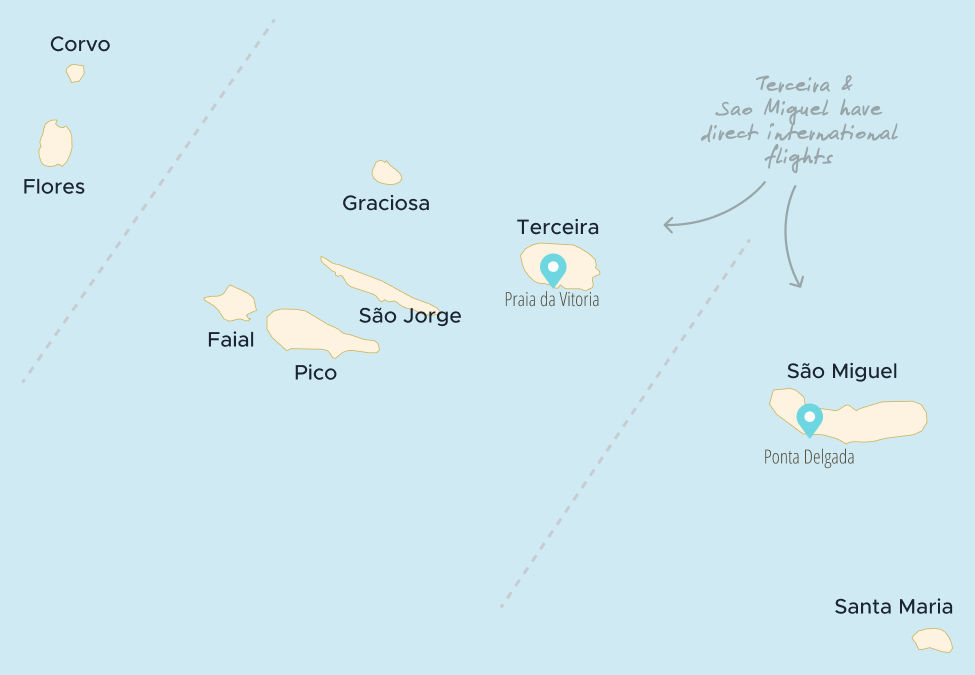
To help you choose the islands for your future Azores getaways, I’ll give them an overview here. I’ll focus on the three major island groups of the Azores. Note that the distances between the island groups have been reduced on the above map just to fit them all in one image.
São Miguel Island
Best for: a great introduction to the Azores
Around two-thirds of tourists who come to the archipelago visit São Miguel. It makes sense as it’s the easiest island to reach internationally and, being the largest island, it also has by far the most things to see and do.
If it’s your first time to the Azores, then São Miguel is a great place to start. It’s one of the best Azorean islands for hiking — mostly thanks to the varied and lush landscapes but also because of the number of hikes available. It’s the only island to have lots of volcanic steam vents and hot springs.
I created a dedicated travel guide to São Miguel that will fill you in on everything else you can experience there.
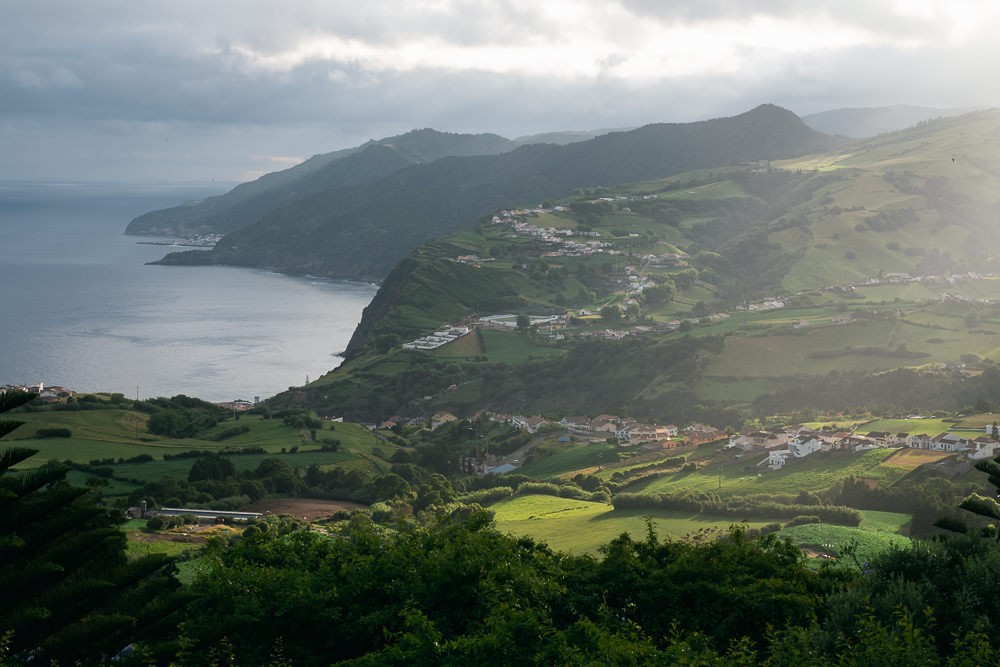
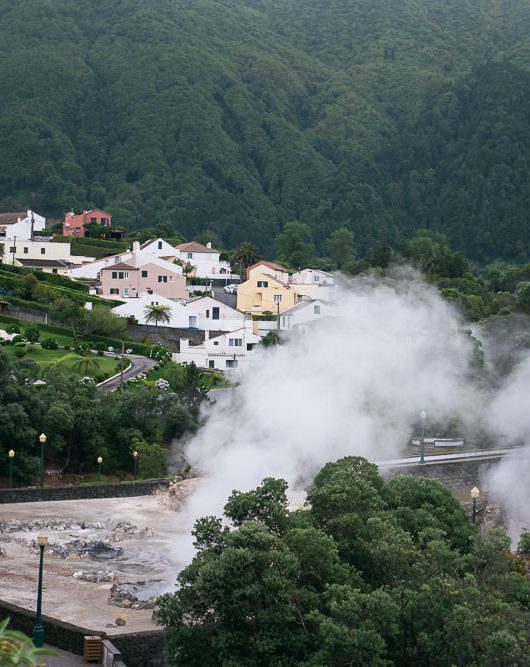
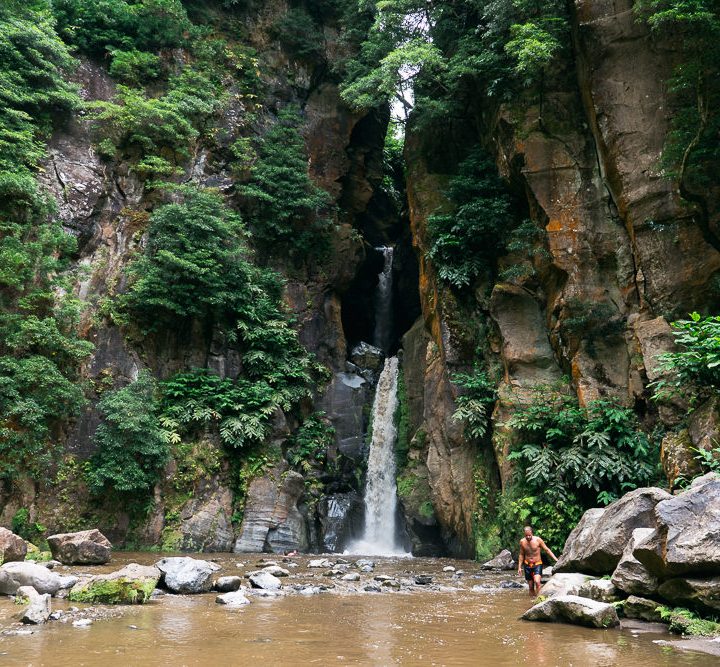
I should also mention that São Miguel is the most developed island. It’s the only one to have 2-lane highways, and the capital of Ponta Delgada is a small but busy commercial center.
A couple of the viewpoints are well-known ‘Instagram spots’, and the island does get busy in summer. That said, if you rent a car, then it’s easy to visit São Miguel’s more remote and charming villages. My favorite parts of São Miguel are the far west and far east.
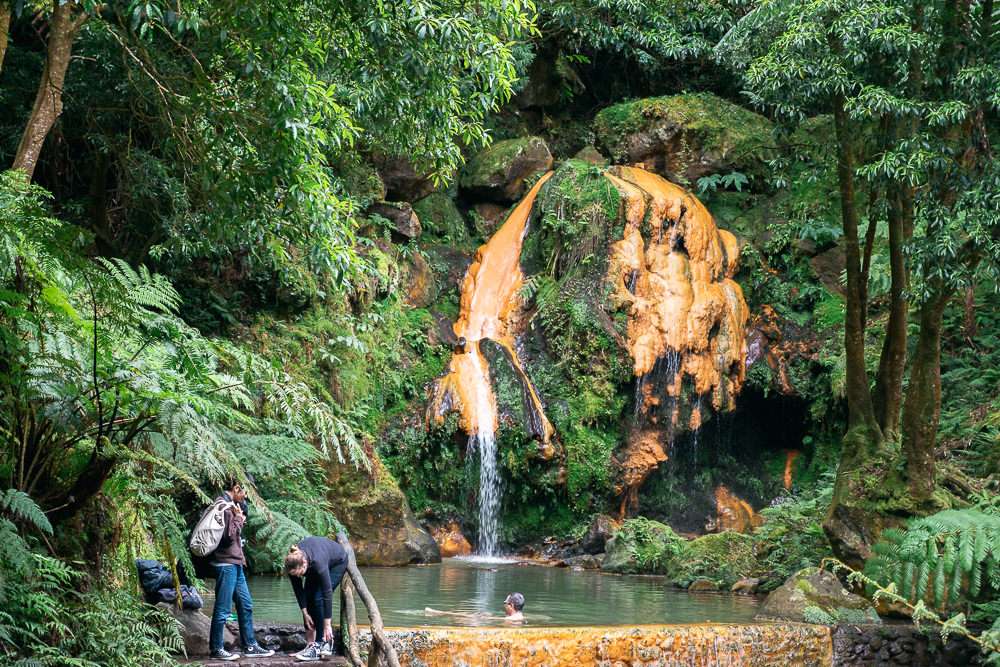
I love São Miguel, and it’s probably the right island for most first-time visitors, especially if you’re on a budget, as hopping between many islands can be costly. If you’re after something a bit more remote and smaller-scale, then the other islands might be more your style.
You can spend about 3 days on São Miguel island to see the top sights, or 7+ days if you love to hike a lot or want to swim at all the different beaches and pools.
If you’re not able to rent a car, you can see São Miguel using organized trips. For example, this São Miguel 2-day island tour with meals and pickup from your hotel is a great alternative.
Central Island Group
Best for: a more varied island-hopping itinerary
If you want to island-hop on the Azores, then this is where I recommend going. Ferries between the central islands never take more than an hour or so.
These central islands have as much to see and do as the biggest island, São Miguel — perhaps even more. Since they’re a bit less visited, exploring them can make for a more unique trip. Let me introduce you to each island.
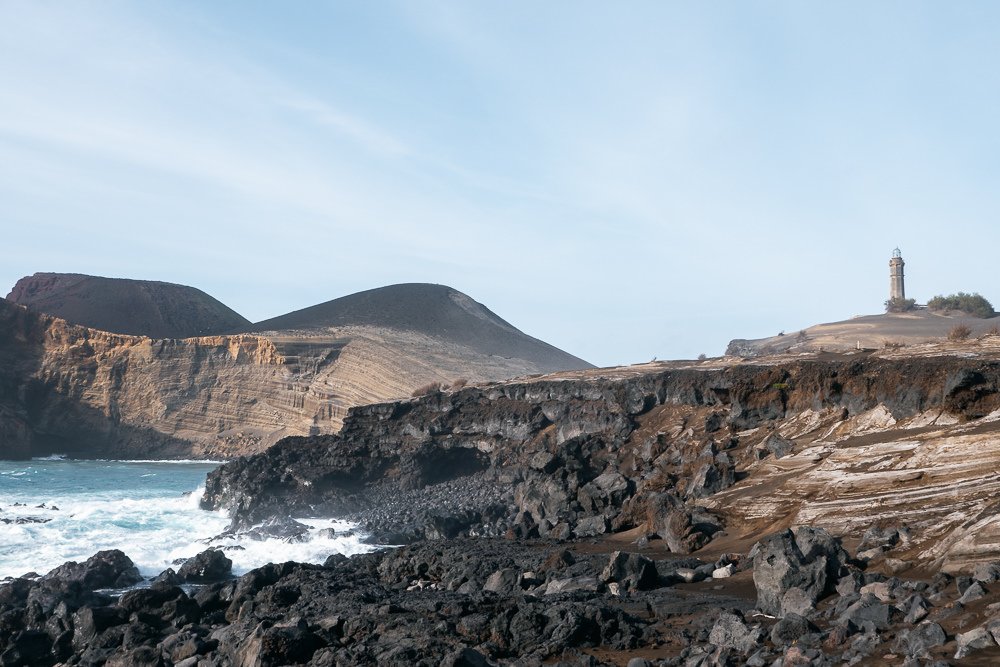
Pico Island
Pico is geologically younger than the other islands, so the landscapes can sometimes be darker and rockier. It’s known mainly for its unique vineyard culture. You’ll see many landscapes checkered with little walls made from volcanic rocks that protect the vines against the harsh elements — it’s a typical feature that earned parts of the island UNESCO World Heritage status.
Don’t miss going on a wine-tasting tour when you’re in Pico.
Besides this, the one question you should expect to hear on Pico is, “will you do the climb?”. Its big conical volcano peak can be seen easily from other islands and beckons to be hiked. At 2351m tall, the climb is a tough one, but it also makes Pico the perfect island for an adventure trip.
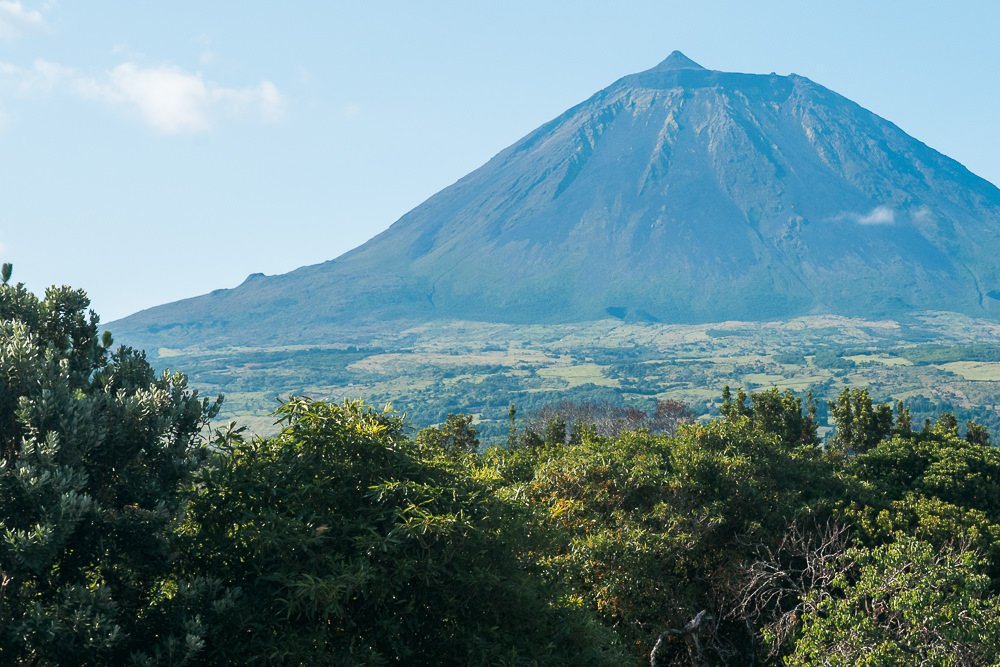
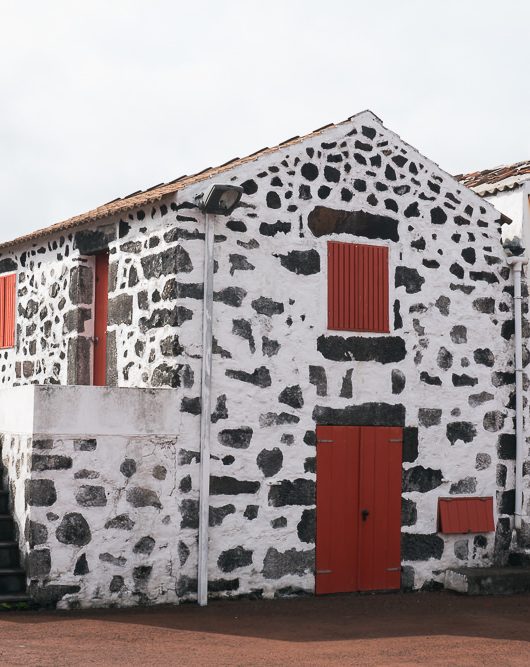
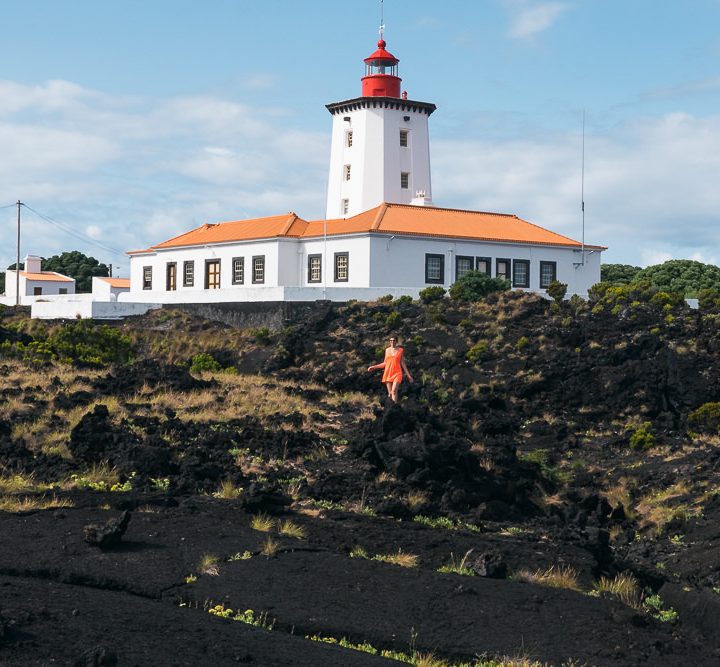
Pico Island is also home to numerous lava tube caves. One of them can be visited without a guide, while others are completely undeveloped and can be explored on a guided tour. I’ve now visited the island on two occasions and created this guide to Pico Island to tell you about all there is to see. There’s enough to fill 2 to 3 days of activities.
Faial Island
This small island is one not to miss! The main town of Horta is surely one of the Azores’ prettiest capitals. Horta is built on hills beside a pretty sailing harbor, with several old church towers poking up from different parts of town. The adjacent bay of Pim is known as one of the best snorkeling spots in the archipelago.
Faial is also legendary among sailors. It’s the one place where recreational sailors crossing the Atlantic like to make a stopover. This gives the island a lively atmosphere during summer. All along the harbor barriers, you’ll find colorful paintings left there by sailors to commemorate their journey.
And for something a little different, Peter Sport Cafe serves as the most important meeting spot where you can gawk at years and years of sailing memorabilia.
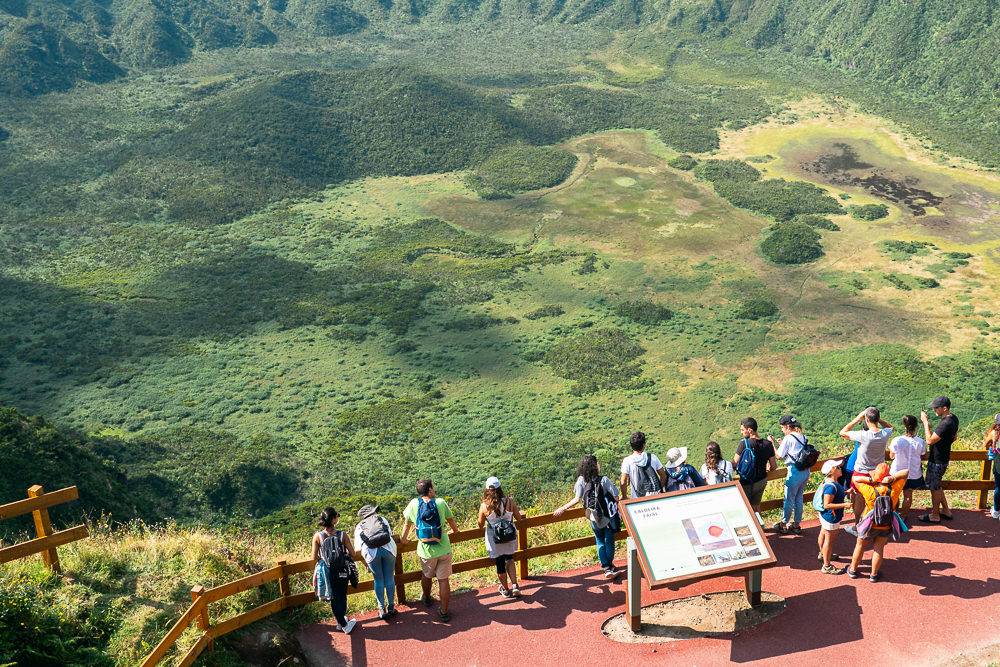
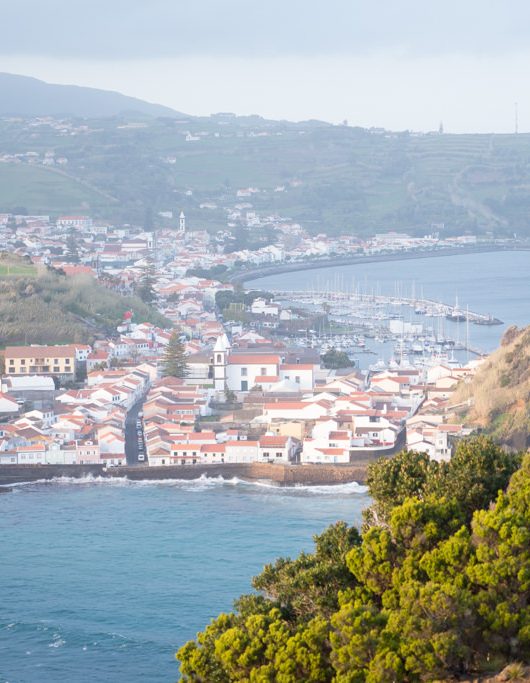
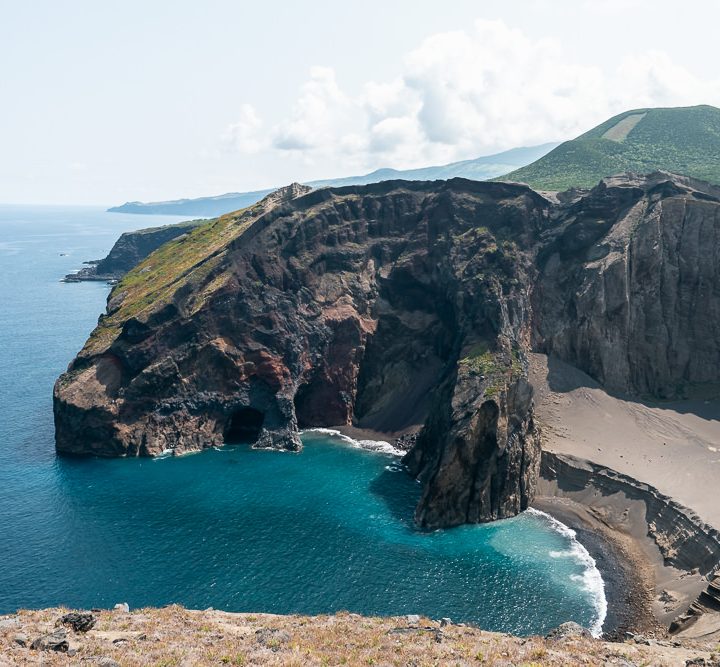
The island has some great volcanic landscapes, especially its lush green central Caldeira and the eruption site of Capelinhas — where a volcano erupted in 1958. Walking around the grey and dusty landscape here will make you feel like you’ve landed on the moon. These are easily some of the most impressive landscapes in the Azores.
After hiking your way across the island, how about joining a horseback riding tour on the Lusitano Trail?
There’s also a cultural element to Faial, with several museums providing interesting insights into its whaling history, as well as its one-time status as an important transatlantic node for the early telephone and telegraph lines.
Faial is a small island, so although it has some truly great things to see, you need at most 2 or 3 days.
São Jorge Island
If you’re looking for Azores off the beaten path (and you love to hike), then this might just be the best central island for you. Here, you can appreciate some stunning nature on an island without any tourism frills.
A central mountain range runs along almost the entire length of the island, forming more or less an elongated plateau. Down the shoreside cliffs are so-called fajãs, which are small plains once formed by lava flows or landslides. At these fajãs, you’ll find tiny villages that can be reached only by windy roads or sometimes by walking trails only.
These thin strips of flat coastal land backed by huge cliffs are the most common in São Jorge. There are over 40 of these fajãs on São Jorge, while the other islands have just 1 or 2.
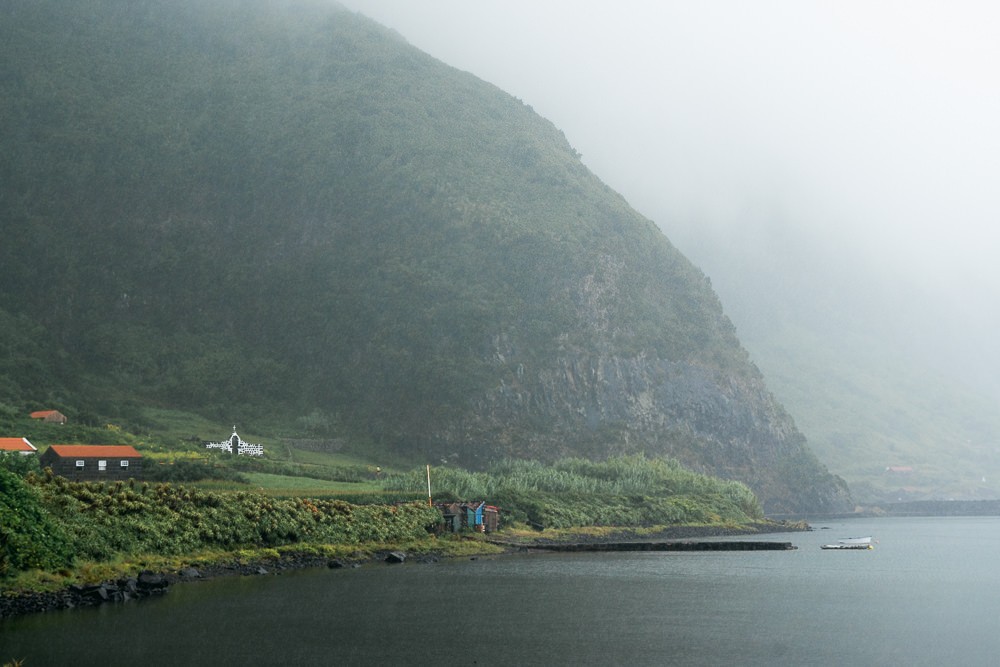
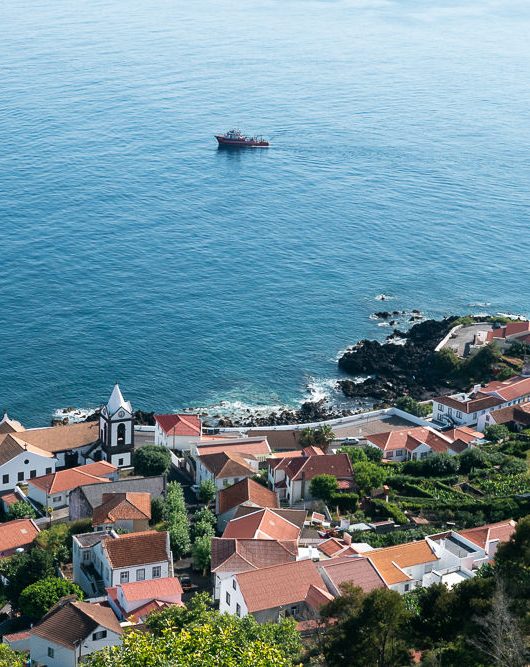
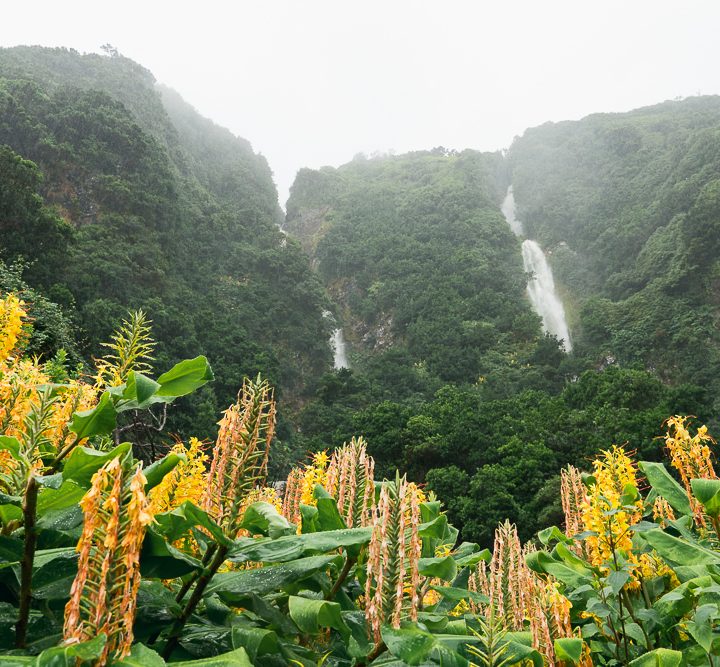
Whatever you do, do not miss the Caldeira de Santo Cristo hike. It goes through some lush valleys on São Jorge, past several waterfalls, and through two of the fajãs.
São Jorge doesn’t have that many restaurants or typical tourist attractions, but it’s the Azorean island I might be most fond of. I think it’s an underappreciated gem that will reward explorers.
Terceira Island
Terceira is the second most populated island after São Miguel and is home to a US Air Force Base, playing an important economic role in the Azores.
I had the fortune of staying with a friend’s family on Terceira, and I visited during the annual summer festivities, where I could witness the traditional Tourada à Corda bull run (this is all in good fun – they don’t hurt the bulls). Because of this, I absolutely loved my time on Terceira, though I must admit it might not have as much to see and do as the other islands.
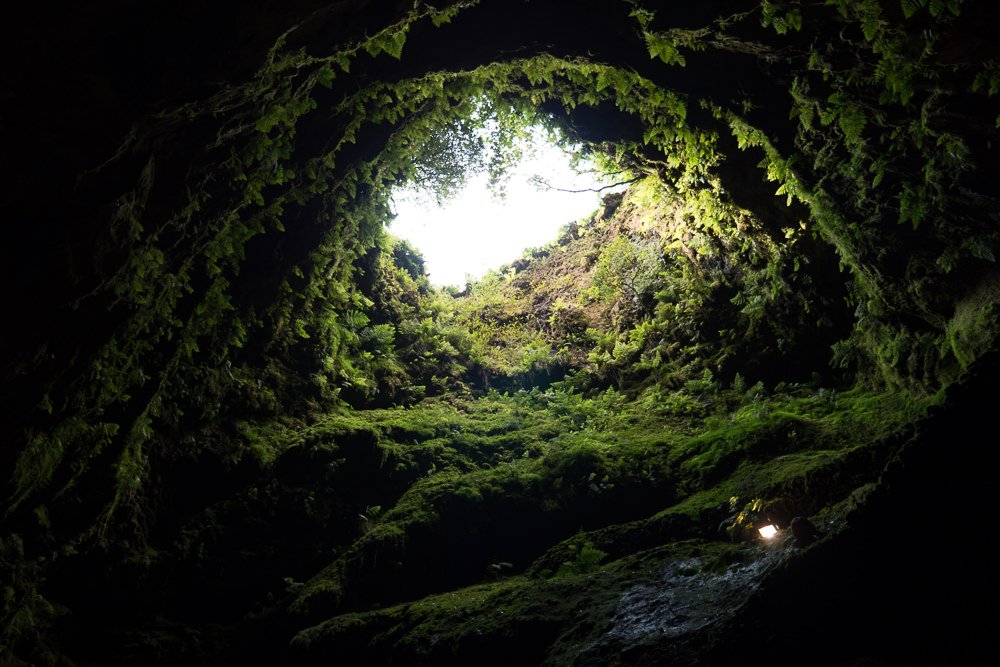
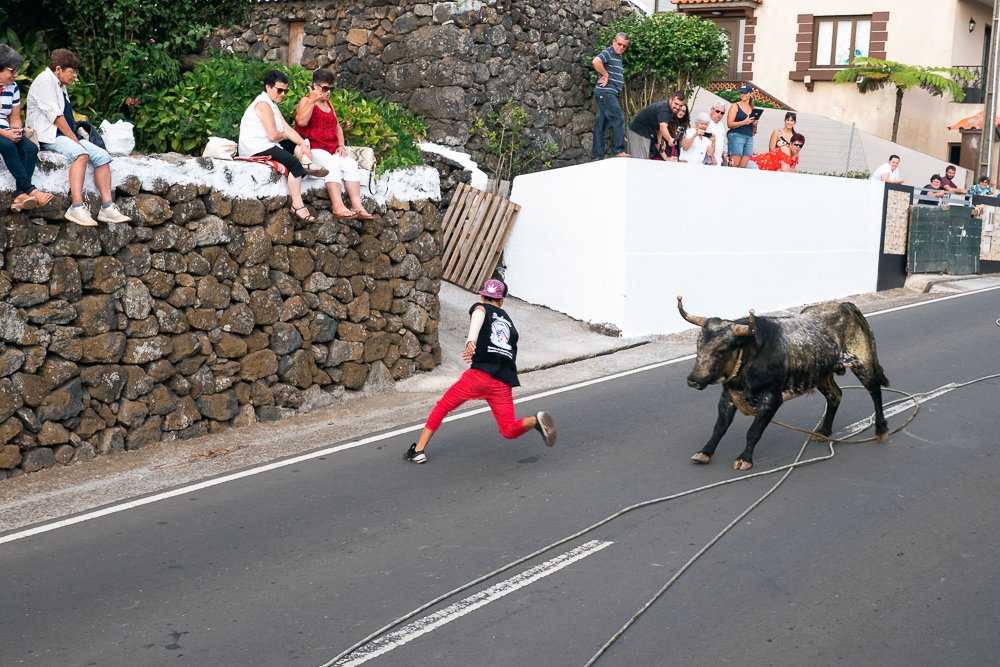
The Algar do Carvão is the biggest and most impressive cave in the Azores. It’s also fun to take a boat ride to the small Ilhéus das Cabras (Goat Islands). Besides this, I think there’s maybe more to see and do elsewhere. That’s not to say Terceira isn’t as beautiful as the other islands, just that the others might be more convenient for tourists.
Definitely give Terceira a day or two if it’s already on your route, as it will still be highly worth it. If you’re not renting a car, consider booking this tour of Terceira Island. Otherwise, I think it’s great to check out Pico, Faial, and São Jorge first — though this is entirely my subjective opinion!
Flores & Corvo
Best for: remote hiking trails and bird-watching
These two islands form the westernmost group. Located far away, they are best reached by plane. Flores is among the smallest islands, with just under 4,000 inhabitants, while Corvo has only one small settlement with a few hundred people.
Flores (meaning flowers) is known as the greenest of all the islands and features epic cliffs with numerous waterfalls, making it one of the top places to go hiking on the Azores. Although Flores doesn’t have a huge amount of accommodation or restaurants, dedicated travelers make their way here for its raw beauty and remote edge-of-the-world feel.
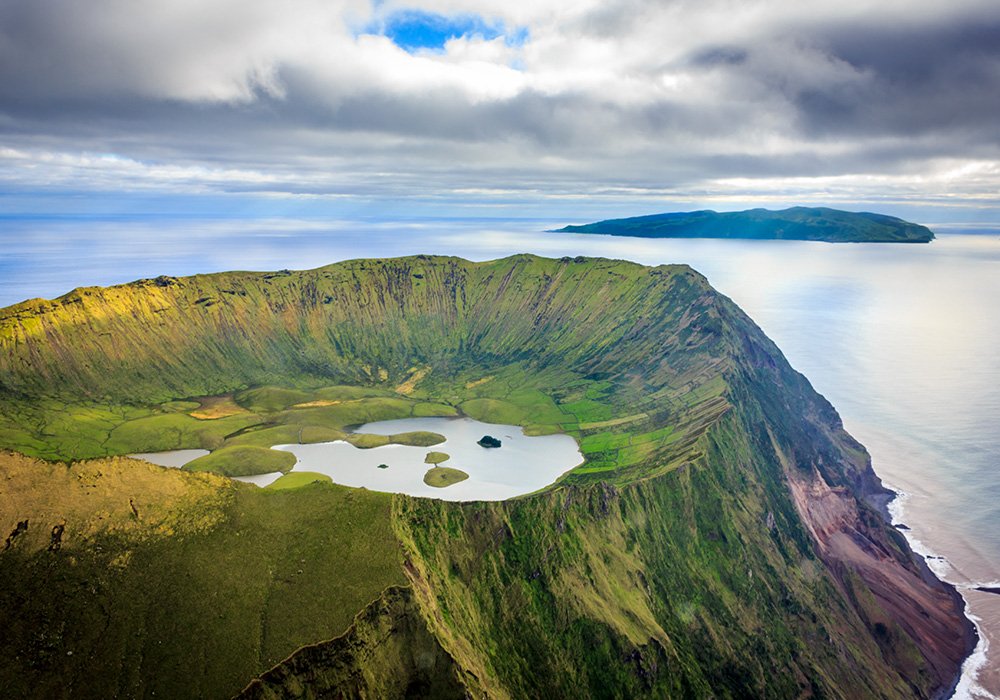
The nearby crater island of Corvo (meaning crow) is a UNESCO Biosphere Reserve. It’s tiny (just 17 square kilometers) and doesn’t feature on the usual Azores itinerary, receiving only about 1,000 visits per year.
However, it’s known by birdwatchers as an excellent place to spot many endemic and migratory species. While I’ve yet to visit, one guide told me Corvo tours get booked out as much as a year in advance due to its reputation as a bird-watching paradise.
How many days do you need in the Azores?
As you can tell, there is a lot to explore on the Azores!
And I have only mentioned the islands that are most commonly visited.
You might wonder just how much time you need to see the Azores, but it’s hard to give a precise answer to this. It always depends on your travel style, your interests, and how much time you can spare for your trip.
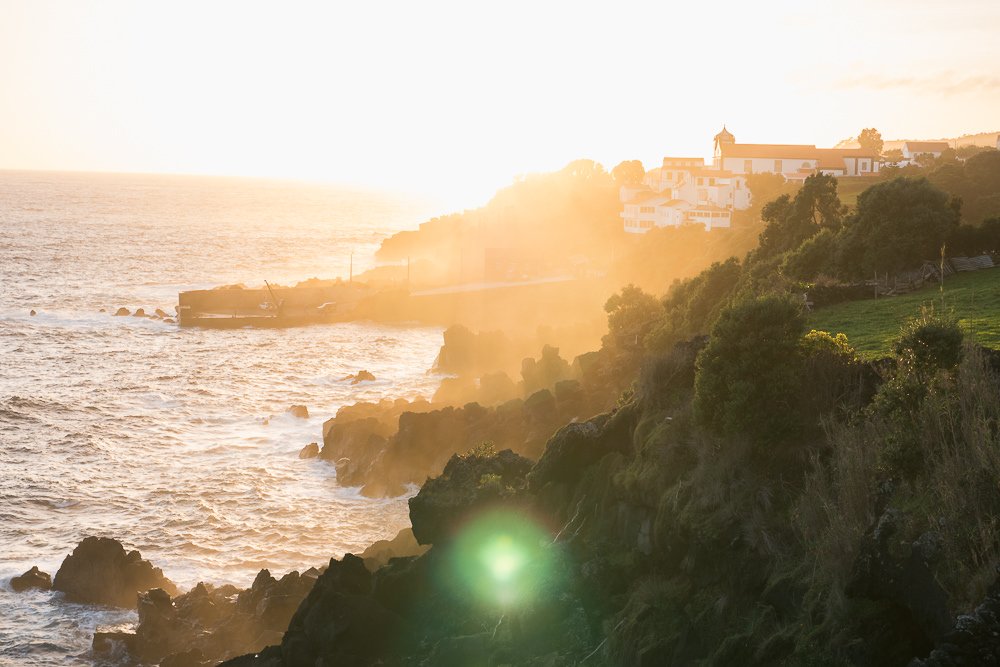
In general, most islands on the Azores take about two or three days to see the highlights. One exception is the largest island, São Miguel, where you can easily spend a whole week, as it just has so much to see and do.
If you like to hike a lot or explore cute rural areas, then you can spend more days on each island.
Azores itinerary ideas
To help you create the perfect Azores vacation for you, here’s a quick breakdown of my recommended itineraries for any traveler:
- 3 days on São Miguel. Good for a weekend trip from mainland Portugal or for a layover, though you’ll only have time for some of the highlights.
- 7 days on Faial, Pico & São Jorge. Fun island-hopping itinerary including some of the best of the Azores! It takes a bit more planning than just staying on São Miguel Island, but it’ll be highly rewarding. Fly in and out of Terceira.
- 7 days on São Miguel. Perfect if you love to hike a lot, swim, and see São Miguel in depth. Consider staying in two different parts of the island and renting a car to explore far and wide.
- 2 weeks or more on the Azores. Start in São Miguel or Terceira, and then see as much as you want!
Final Thoughts on the Best Azores Islands to Visit
So there, you have it, an in-depth guide to exploring these Portuguese islands. Whether you’re looking to backpack through Portugal’s unique islands or have a short layover during your American-to-Europe trip, the Azores is a fantastic place to go.
If you’ve recently visited Azores and feel I’ve felt something out, please leave a comment. I’m always looking to learn more and improve my travel guides.
There is too much to share about the Azores to fit into a single guide, so don’t miss my other posts about these beautiful islands:
- Best beaches & natural pools on the Azores
- A complete guide to São Miguel (3 to 10 days stay)
- Amazing hiking trails on the Azores
- Why you should visit São Jorge
- Top things to do on Pico
- Top things to do on Faial
Azores quick answers
Where are the Azores Islands?
The Azores is located in the Atlantic Ocean. It’s an island group belonging to Portugal. It’s about a 3-hour flight from Lisbon in mainland Portugal and roughly 5 to 6 hours from Boston or Toronto.
Why visit the Azores?
Due to its climate, the Azores is not a typical sun-and-sand vacation destination, but it’s known for its varied geography, cuisine, culture, and nature trails. You can see volcanic craters, drive along meandering coastal roads, go dolphin- and whale watching, gorge on fresh seafood, and go hiking all over the Azores.
What is the best time to visit the Azores?
The weather in the Azores is generally best from June to September, making this a great time to visit. However, the islands are more crowded in August when it’s peak tourist season.
How can you get to the Azores?
The Azores islands are reached by air. The biggest airport is on the island of São Miguel, followed by the airport of Terceira. There are direct flights from numerous places in Europe, as well as Boston, Toronto, and seasonally from Oakland and Montréal.
Do you need a car in the Azores?
It’s recommended to have a car. Public transport can’t be relied on to take you to most places of tourist interest. You can see many sights on organized tours, but the best way is to rent a car.
What are the best islands to visit in the Azores?
The largest island of São Miguel offers a great introduction to the Azores if it is your first time visiting. The central islands of Pico, Faial, and São Jorge are also easy to combine in an island hopping itinerary.
How many days are enough for the Azores?
It takes about two or three days per major island to see the highlights there. One exception is the largest island, São Miguel, where you can easily spend a whole week.
Some links may be affiliate links, meaning I may earn commission from products or services I recommend. For more, see site policies.

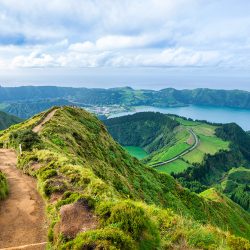
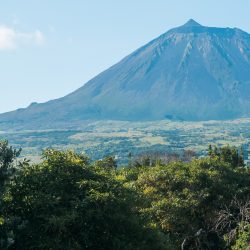
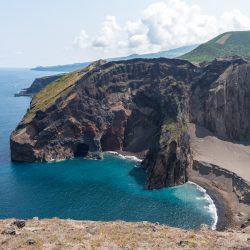

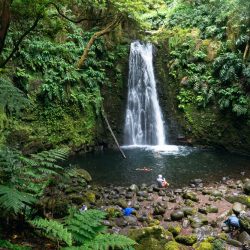
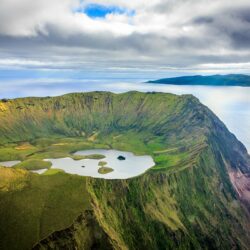




Cześć Marku!
Great post again. I found your suggestions extremely useful when planning a trip to Sao Miguel last year. The island kept us busy for two weeks and we really didn’t want to leave (we still didn’t manage to see everything we wanted). It was out of this world beautiful and unique. Now we’re considering going to Pico/Faial/Sao Jorge for some more hiking and whale watching, I can’t wait.
Happy travels 🙂
Cześć Kasia 🙂 Glad you found this useful and that you ended up loving Sao Miguel so much! It really is a gem, the other islands maybe even moreso. If Sao Miguel was your thing, then it’s definitely worth going back!
What a beautiful place, a truly unique destination! I had the luck of spending around a month on Sao Miguel, which was pretty epic! Unfortunately wasn’t able to visit any of the other islands, would love to go back in the future to visit Flores as well!
Cheers for the guide!
By the way, the big cave in Terceira is really a volcano. Also Angra do Heroísmo is a beautiful city, being also part of UNESCO.
Hey, how come you didn’t mention the island of Santa Maria which is nearest to S. Miguel? It is just as worthwhile to visit as any of the the other Azorean islands.
We recently were in the process of booking a tour with Azores getaways. they contacted me with a tour of 5 islands food tour, I was so excited as a chef and culinary arts instructor at Arctic College here in Canada, So tenth emailed me, we can only offer this from Boston, well again another air fare but we wanted to come to th Azores so we said yep ww will pay for a flight to Boston to get on the tour, then I reviewed a message saying, we have re checked you can leave from Toronto, great, so after sending all the passport info etc, I received an email saying sorry this tour is no longer available, as a professional travel company should they not have checked to see if the tour was actually available, well the did not. but instead offered me another itinerary which was excuse my potty mouth total crap and double the price that was on the internet. I am hoping you may have something for us. Is their a tour that offers Island hopping with food tours, yes or no. thank you.
Sorry to hear about your poor experiences Annette! Sadly I can’t offer much advice regarding tour companies as I’ve only visited the islands without a tour, so I’m not so familiar with what’s available.
Hi Marek. Nice article about the Azores. Next time you should try go fishing in Sao Miguel islands. If so, check out https://www.seazores.net
Thanks for the great information!
I’m looking at spending 1-2 months on the islands (mainly to surf). This article definitely helps in making the decision on where to go. Based on your article, I’m thinking probably 1 month on Sao Miguel, 2 weeks island hopping on the central islands and then 2 weeks on Flores. Do you think this would be a decent itenerary?
Super excited, thanks again!
Sounds like a great plan. Maybe 2 weeks is a lot just for Flores… the island is not that big. But if you’ve got lots of time, then why not!
What a fantastic article! I’d love to visit and this has helped me get a lot of things in order in my mind. I’ll be revisiting it when planning my trip when international travel becomes more feasible again. Thank you so much!
Hey Marek
Great website! After reading your blog and doing a bit of research… im thinking to spend 3 days in Sao Miguel, 2 days in Faial, 2 days in Sao Jorge and 1 day in flores (8 days total). Is that enough? I know you haven’t been in flores but guessing about the other islands? Im a faster traveler than most though
Thanks
Leo
Hey Leo. Yeah that’s probably just about enough. I’m a slower traveler normally, but I’ve done 3 of the islands in 1 week before and it wasn’t too rushed 🙂
I recently visited Azores – had a wonderful trip. The islands are beautiful, great hot sprints and very good seafood. Somewhat limited facilities but a worthwhile place to visit. Here is the whole trip – http://www.ridgepost.com/travel/portugal-2019/index.html – with pictures.
Hello Marek! I love reading your blog and the travel guides. I was curious about which tools you use to draw the maps you use in your posts: where you take the maps and how you customize them.
Hey Nicola. I get maps from sites like freevectormaps.com and manually edit them using software called Figma. 🙂 Unfortunately I don’t know of an app that lets you do this easily…
Planning a trip to the Azores in September! We are planning on flying into Terceira and spending two days there and then going to Faial for 3 days (hopefully with a day tour of Pico from there) and then to Sao Miguel for 4.5 days. Given your experience, does this seem reasonable or does it seem like too much?
I also noticed in one of your replies you mentioned a cancelled flight between the islands – does this happen frequently?
Thanks!
Hi Kelsey. I wouldn’t worry too much about the flights. The one that was canceled for me was a flight to Flores which is known to be difficult to get to (as it’s the outermost island) and it was in winter with bad weather too. You’re going to the central islands and in summer and I believe problems are not common in this case.
Timing seems reasonable. I’d definitely try to do the Pico tour… very scenic island.
Hi Kelsey! Just wondering, did you do this trip in the end? And if so how easy was it to book the travel between islands? Was it all via ferry? How did you find the time was it enough for each island? Thanks, Cassie x
We are planning a stop in the Azores for seven days while on our honeymoon this coming August. Would you recommend going to multiple islands? We are intending to do Sao Miguel, but then we are unsure if we want to do a second island or if Sao Miguel will have enough to do and see for 7 days. If you would recommend seeing a different island, which for hiking landscapes and relaxing?
Sao Miguel has plenty to do for a week, but I’d maybe add a couple days on another island for variety. I think Pico is really nice for its landscapes. I haven’t made it to Flores (my flight was canceled) but that island has some of the most beautiful hiking trails.
Went to the Azores (Sao Miguel) a few years ago and absolutely loved it! Delicious seafood, friendly people, and lush scenery combined with few tourists make it a place I want to keep for myself.
Heading there on Sunday for 5 days, though just to Sao Miguel. Any must-do hikes or outdoor activities? I’ll likely rent a car now, since you suggested it! 🙂
Walking/cycling around the Sete Cidades crater lake is good, and climbing up to the rim of the Lake Furnas crater. Several people told me the Faial da Terra hike is great, though I didn’t have time to do it this time 🙂